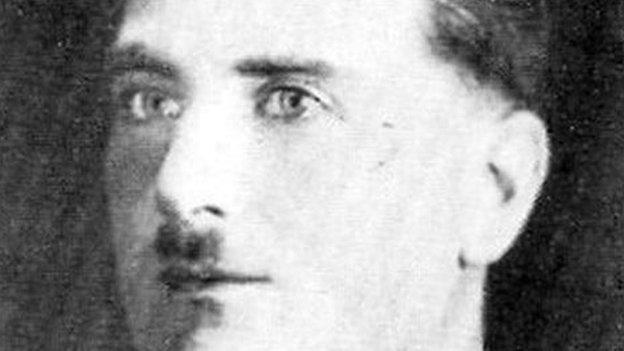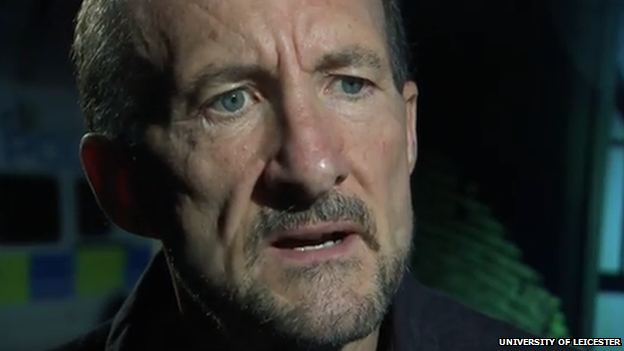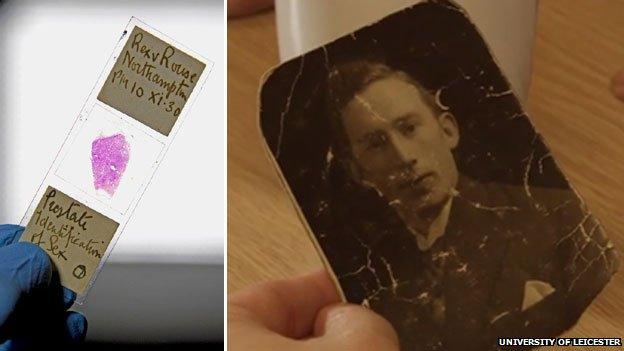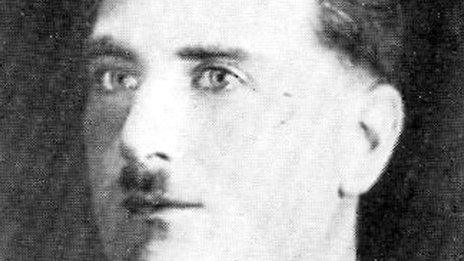Alfred Rouse 'blazing car murder': DNA tests fail to identify victim
- Published

Alfred Rouse was hanged for murdering the man, whose identity remains a mystery
A man's death in a burning car almost 85 years ago remains a mystery after DNA tests revealed nine families are not linked to the murder victim.
Alfred Rouse tried to fake his own death by leaving a man to burn in his Morris Minor in Hardingstone, Northamptonshire in 1930.
He was hanged for the "blazing car" murder but his victim was unidentified.
A DNA profile was found in 2013 and has been used to disprove theories of family connections to the case.
Philanderer Rouse, 36, was in financial trouble when he set his car alight with a man inside.
Similar clothing
He was seen by witnesses and tracked down by police, who were unable to identify the man he had killed.

Dr John Bond said he would carry out further testing should other strong cases be found
Rouse never divulged whether he knew his victim and was hanged at Bedford Jail.
The case has been reinvestigated by the University of Leicester after scientists at Northumbria University managed to extract a single, uncontaminated DNA profile of the victim from an archived slide.
It was initially used to help disprove a family's long-held belief that 23-year-old factory worker William Briggs had died at Rouse's hands.
He had gone missing en route to a doctor's appointment in London and his clothing and hair colour tallied with samples found on the victim.
His family took part in DNA testing, which proved without doubt that they had no connection to the case.
Search continues
Although unsuccessful, their case featured on The One Show and elsewhere last year and prompted 15 families to contact the University of Leicester.
Forensic science expert Dr John Bond and his team whittled the cases down to nine possible victims.
Each family was put forward for DNA testing, but no matches have been found.
Dr Bond said that while the outcome was disappointing, he would carry on with the investigation.
"We have processed the DNA from these nine families and, unfortunately, it is very unlikely any of them are a match to the victim.
"That said, we have two other families who have come forward, so the search continues.
"When we have sufficient families, we will run another batch of tests."
He has previously said thousands of people were displaced at the time after struggling to adjust after World War One, and Rouse's victim could have been a vagrant whose disappearance would have gone unnoticed.

Scientists initially compared the DNA of the 1930 murder victim to that of the family of William Thomas Briggs
- Published28 December 2014

- Published18 October 2014

- Published20 January 2014
